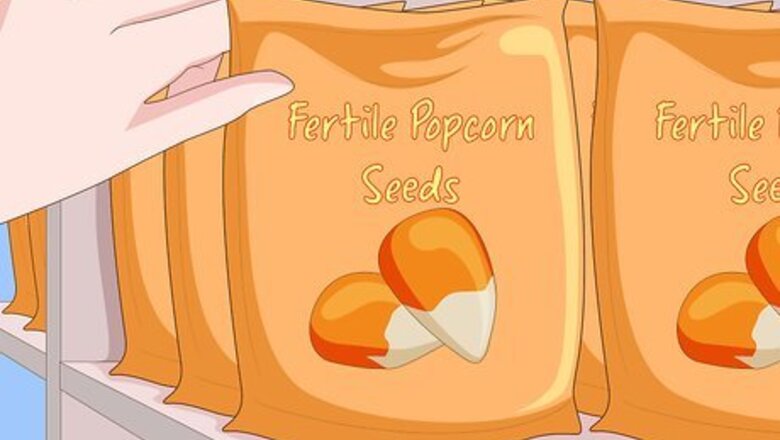
views
Planting
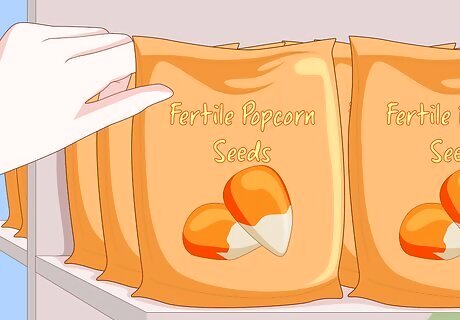
Buy some fertile popcorn seeds. You can use plain popcorn from a bag, but you will want to do a fertility test first. Not all store-bought popcorn will be fertile because of the heating and sterilization processes popcorn goes through before being packaged and sold. You can also buy popcorn seeds from a seed company or from a farmer. To test store-bought popcorn for fertility: sow 20 seeds, water, and wait. If the corn grows in about a week, you have fertile seeds. If 2 weeks pass, and you still don't see any sprouts emerging, you have infertile seeds. The seeds must be fertile in order to grow.
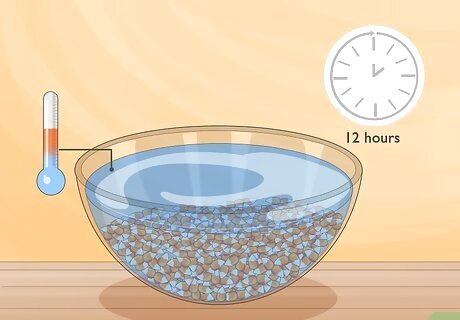
Soak the corn kernels in warm water for 12 hours. This helps moisten them so they will germinate faster.
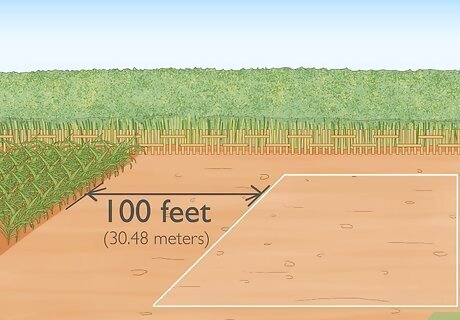
Choose the right spot. Make sure that the spot will receive lots of sunlight and that the soil drains easily. You will need lots of room to grow corn. Don't plant within 100 feet (30.48 meters) of other types of corn, or you may get cross pollination. This could result in hybrids, and may affect the flavor.
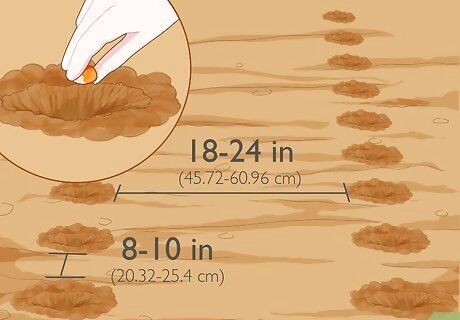
Plant the kernels after the danger of frost has passed. Depending on where you live, this will be sometime between the first week in March and the middle of May. The soil should be between 50 and 55°F (10 and 12.7°C). Expect the seedlings to emerge in 3 to 12 days. Space seeds 8 to 10 inches (20.32 to 25.4 centimeters) apart. If you are planting in rows, space the rows 18 to 24 inches (45.72 to 60.96 centimeters) apart. Plant the corn ½ inch (1.27 centimeters) deep in the spring. Plant the corn 2 inches (5.08 centimeters) deep in the summer. Put 2 seeds in each hole. Only 75% of seeds germinate.
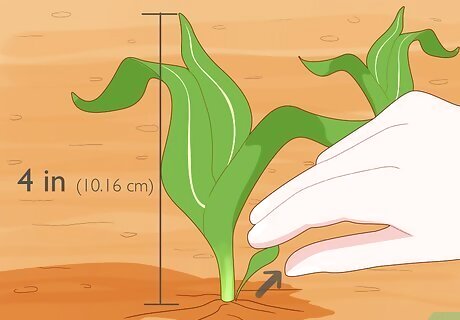
Thin seedlings when they are 4 inches (10.16 centimeters) tall. Don't thin them any sooner, as not all seedlings survive. Thin them until they are 10 to 15 inches (25.4 to 38.1 centimeters) apart.
Growing and Care
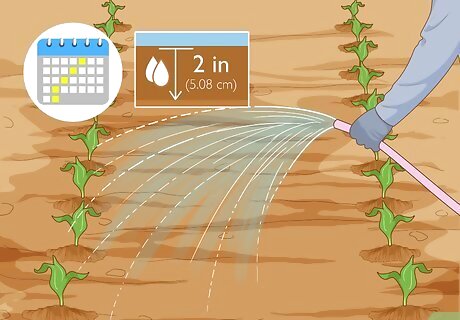
Water the corn often. Popcorn is a thirsty plant. It will need about 2 inches (5.08 centimeters) of water each week (depending on soil condition) until it is ready to be harvested. This will take about 100 days.
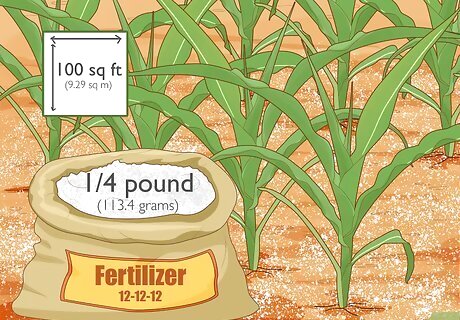
Use a fertilizer high in nitrogen (12-12-12 fertilizer) occasionally to help the corn grow. Spread the fertilizer between the rows. Water it to get it into the soil. You do not need to fertilize often. Only two or three times. Here is when you use fertilizer: When the corn is about knee-height, or gets 8 to 10 leaves: use ½ pound (226.80 grams) of fertilizer per 100 square feet (9.29 square meters). When the ears form silk: use ¼ pound (113.4 grams) of fertilizer per 100 square feet (9.29 square meters) once the ears form silk. Add more fertilizer if: the leaves turn yellow or pale, especially after getting silk.
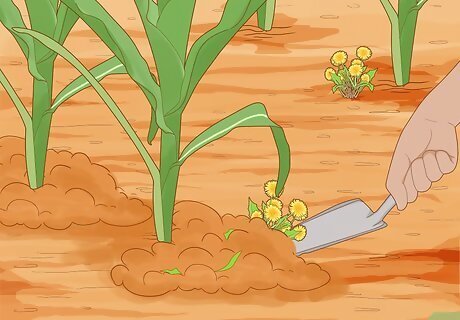
Be on the lookout for weeds. Weeds can damage popcorn by using up all of the water and nutrients that the corn needs to survive. To get rid of weeds, you will need to cultivate the soil around the corn. Be careful so that you don't damage the roots.
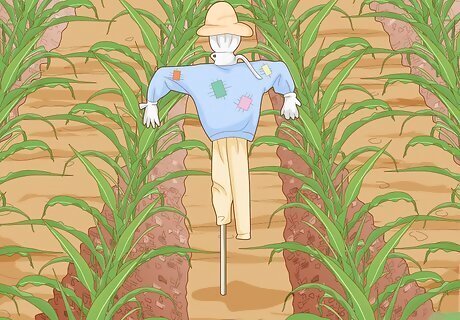
Scare away the crows. You will want to be alert from the moment your corn starts to sprout—or possibly even before. Here are some ways you can keep those feathered thieves away from your crop: Place mulch around your corn. By the time the seedlings come up, the crows won't be as interested in them anymore. Put up a scarecrow. Place a tunnel of chicken wire over each row of seedlings.
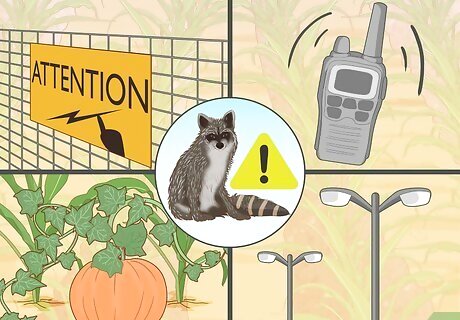
Chase away the raccoons. Raccoons will go after corn once the ears form and start to ripen. Fortunately, there are a few ways you can protect your crop from those furry bandits: Install an electric fence around your field Put some hot pepper on the silk. Install a flood light and train it on the corn. Use portable radios around the corn. Try the Native American trick of planting pumpkin around the corn. No one is quite sure as to why this works, although there are many theories.
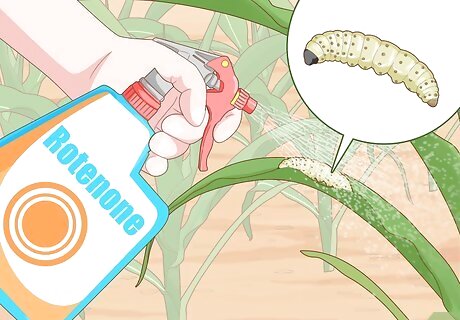
Be wary of borers. They attack mainly the stalks. They leave behind tiny holes filled with dust. The easiest way to kill them is by squeezing the stalk. The most effective way is to apply pesticides, such as rotenone or Bacillus thuringiensis (BT).
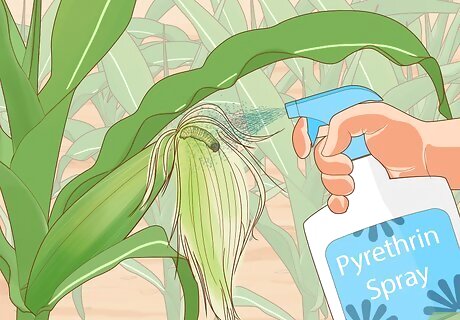
Be on the lookout for earworms. True to their name, earworms attack the ears, just as they start to form silk. There are two ways to handle earworms: Before the silk turns brown, sprinkle the tip of each ear with a pesticide, such as: Bacillus thuringiensis (BT), pyrethrin, or rotenone. After the silk turns brown, put a drop of mineral oil on the tip of each ear.
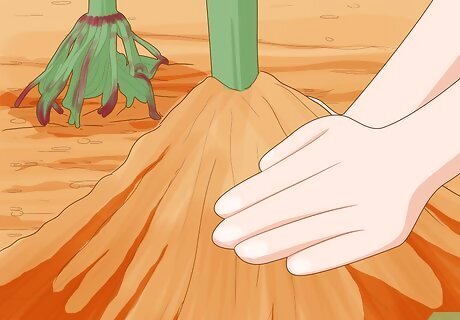
Support the stalks. When the stalks start to grow, they will need more support. Pack some soil around their bases to help them stand up.
Harvesting and Use
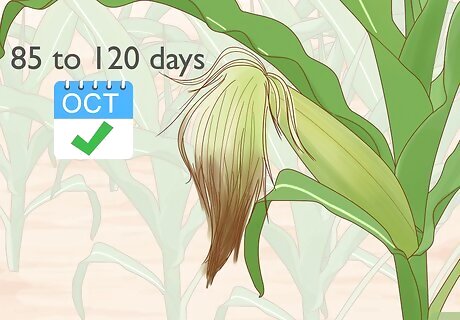
Expect the corn to mature after 85 to 120 days. Depending on when you planted the corn, this will be around October. It also depends on the species of corn; some species are ready for harvest sooner than others.
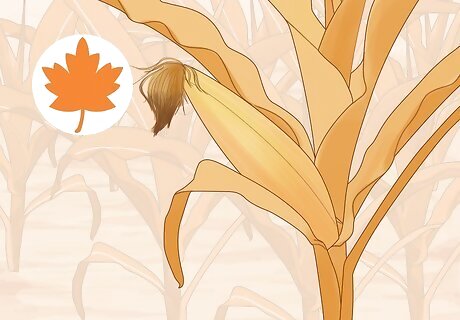
Let the corn dry on the stalks. If the autumns where you live are dry, you can let the corn dry right on the stalks. If the autumn starts to get rainy, harvest the corn, and take it inside, to finish drying.
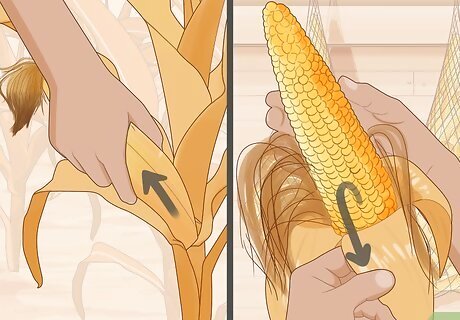
Harvest the corn when it is ready. The husks should be dry, and the kernels hard. Pull the corn off the stalks first, then peel the husks off.
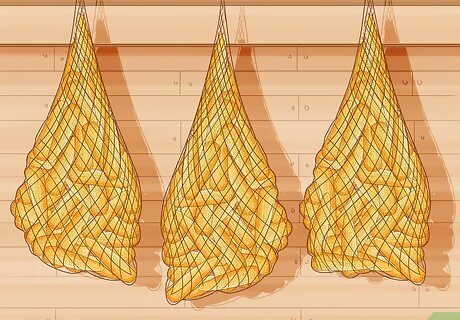
Store the corn properly for the next two months while it cures. Place the husked ears in mesh bags. Hand the bags in a dry, warm, well-ventilated area. You can also use nylon stockings instead.
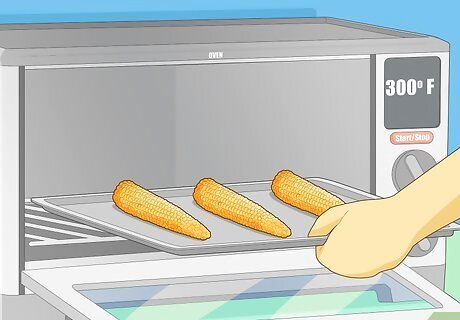
Dry the popcorn in the oven if desired. Preheat your oven to 300 degrees Fahrenheit. Then, place the popcorn flat on a large baking sheet, put it into the heated oven, and immediately lower the heat to the lowest setting. Stir the popcorn occasionally while drying it in oven over the course of five hours. Then, turn off the oven, remove the popcorn, and allow it to cool overnight.
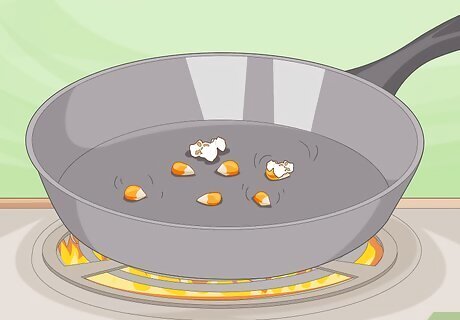
Do the pop test to see whether or not the corn is ready. Simply twist a few kernels off of the cob, and put them onto a hot pan. Heat them in some oil as you normally would. If the corn pops, it is ready. If it sticks to the pan, it is not ready and needs to dry/cure longer.













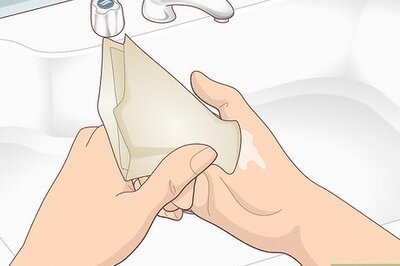






Comments
0 comment